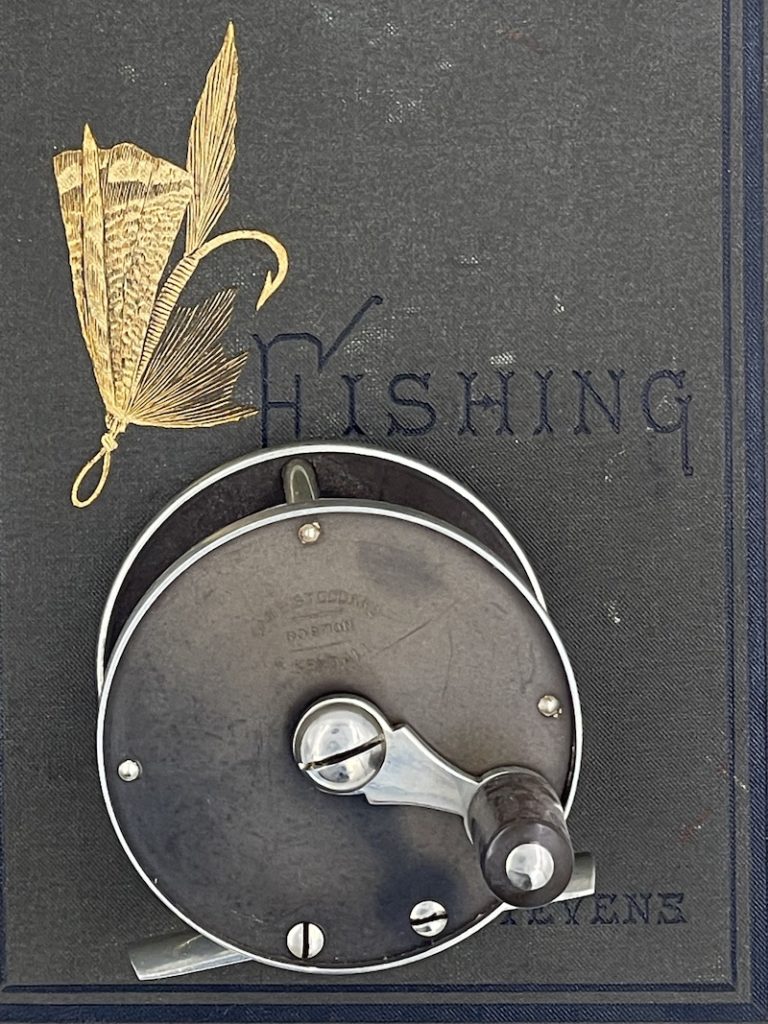
Collecting early American and British trout reels provides an opportunity to own some small mechanical wonders designed to fish the rivers and brooks that held the brown trout and brookies of yesteryear.
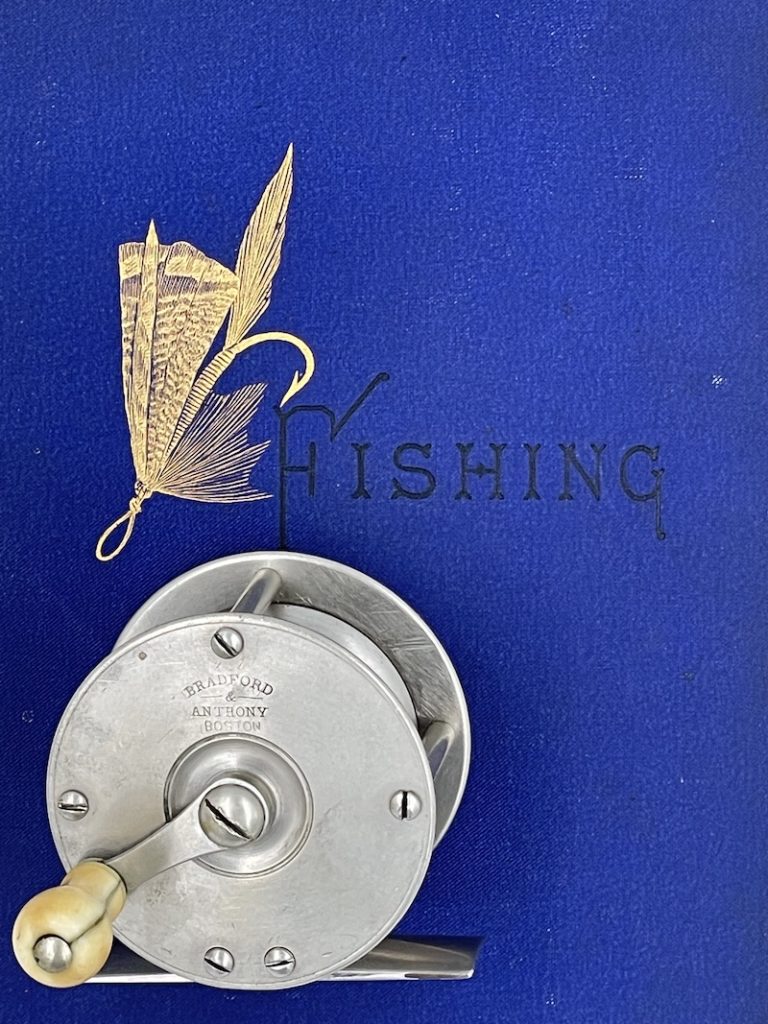
Trout reel making followed an evolution from reels that simply held the line to those that helped to control the flow of line from a running fish with a drag or click mechanism. Early reels were mainly just winches commonly made of brass which were fairly simple in form and design.
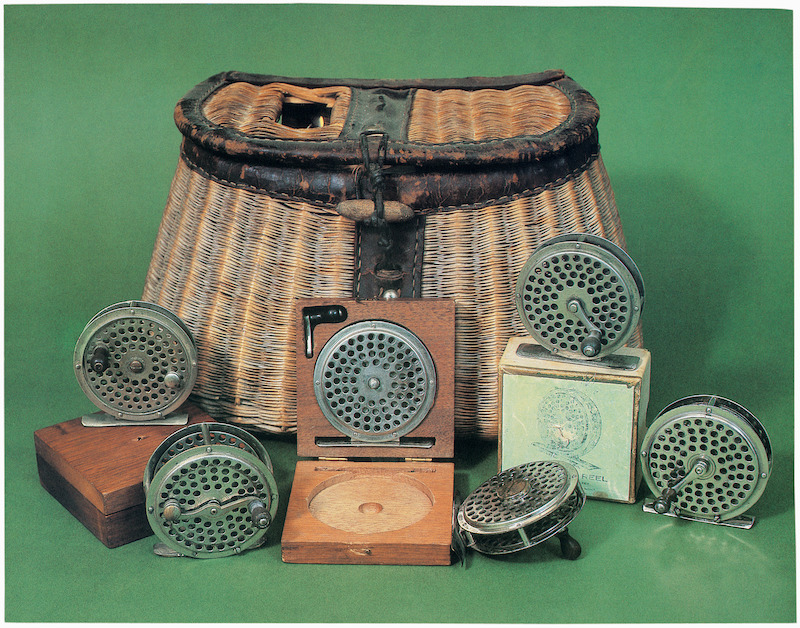
The Orvis Company produced the first fly perforated fly reel designed to be mounted upright on the rod in 1874, allowing the reel to be fished below the rod, with the perforated design permitting easier drying of the silk lines in use at the time.
The Orvis reel was ultimately produced in many different versions, with most of them attractively nickel-plated, including a wide spool bass version, as well as a very rare gold plated version made in 1878 “for prizes”.
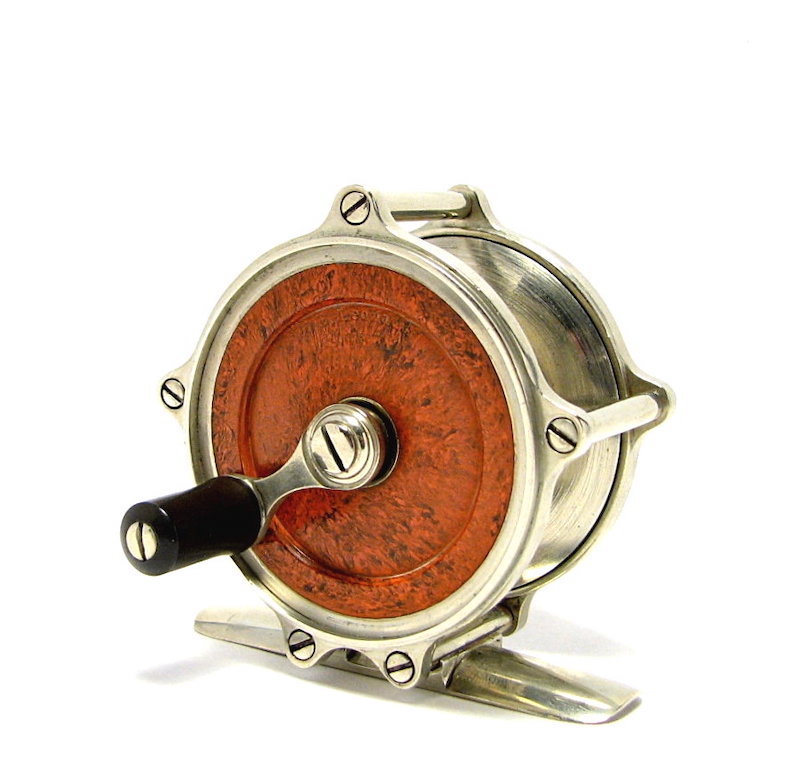
Pillared reels were also produced, including some with side plate materials of hard rubber, ebonite, or other material was chosen as much for appearance as for function. The Leonard Philbrook and Paine trout reels, also produced in a salmon size, represent the apex of the reel maker’s art in the late 1800s. The marbleized slide plates were produced using ceramic-like mud, producing a stunning, somewhat fragile design.
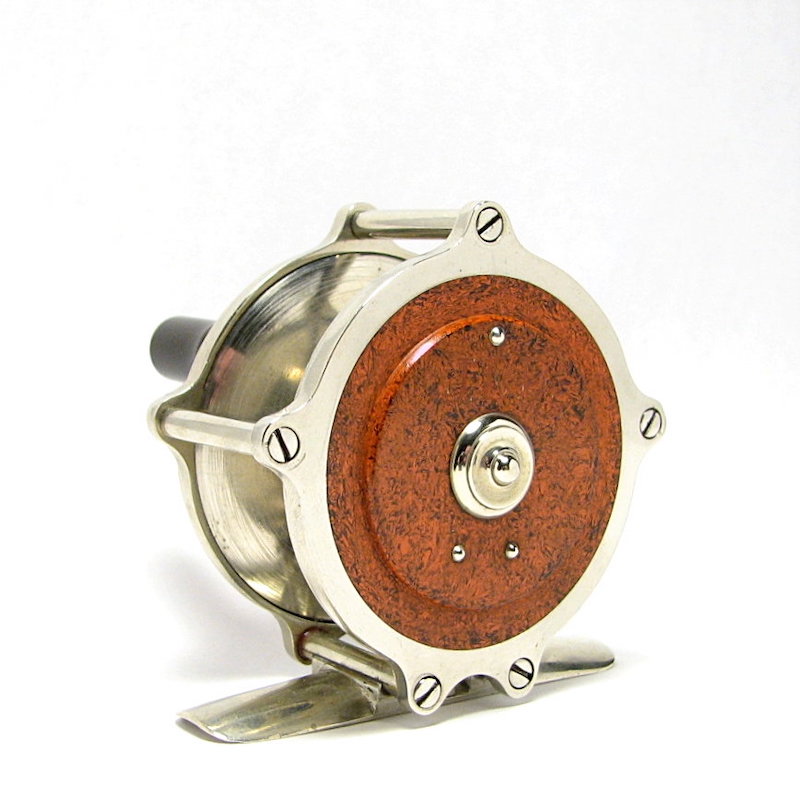
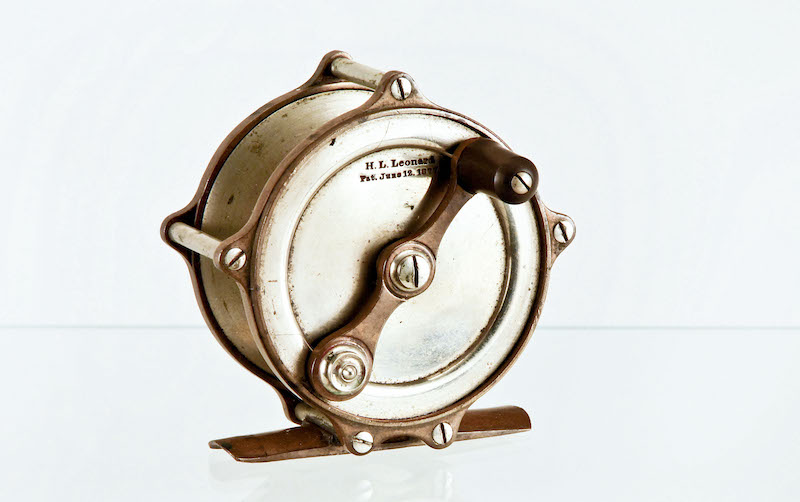
These reels were designed by Francis J. Philbrook, a gunsmith machinist from Bangor, Maine who assigned his reel patents to Hiram Leonard. Philbrook and rod maker Ed Payne manufactured the reels for Leonard, stamping them “H.L. Leonard Maker” on the faceplate.
Some trout reels were also produced using “Nickel Silver” or “German Silver”, both silver alloys with a silver appearance without sterling silver content. Some rare real coin silver trout reel models remain very scarce and highly valued.
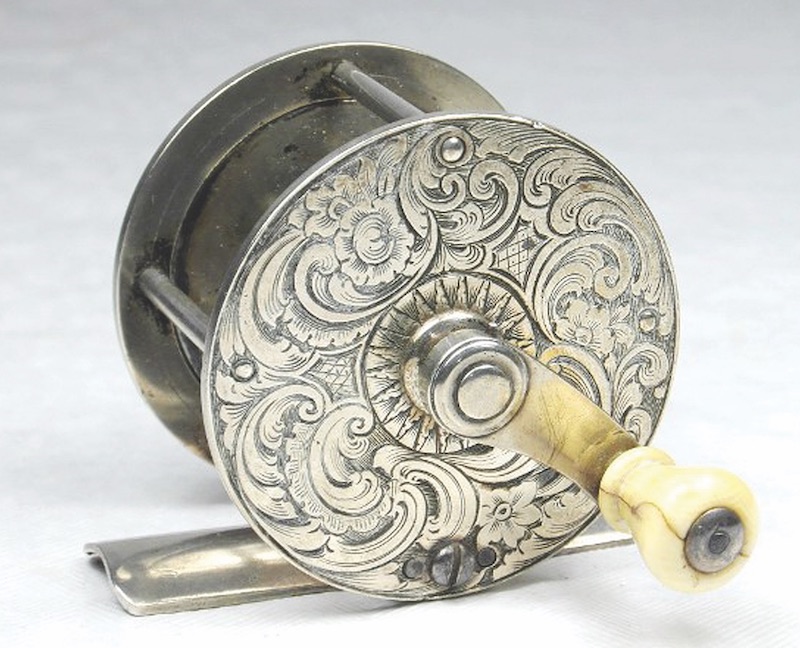
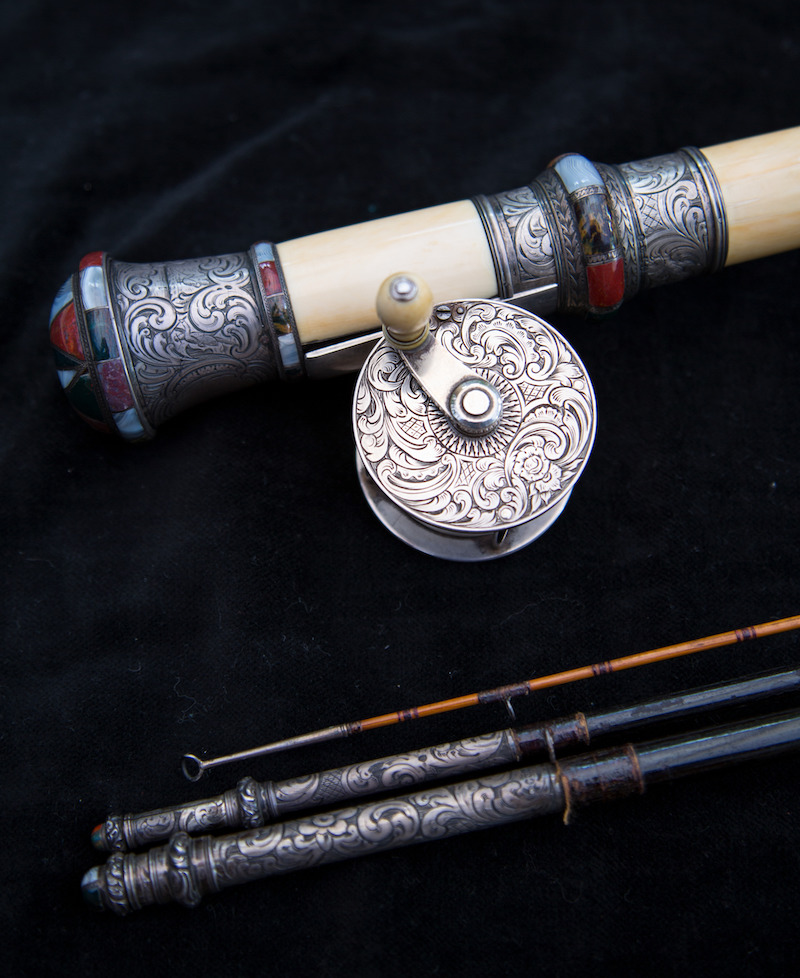
This early, very ornate Irish silver trout reel recalls the elaborate scrollwork and engraving from the fine firearms of the times. Two early Bradford and Bradford and Anthony reels from Boston in the mid to late 1800s were also stamped with their brand, with one engraved: “Presented to L.P. Saunders From His Shopmates”.
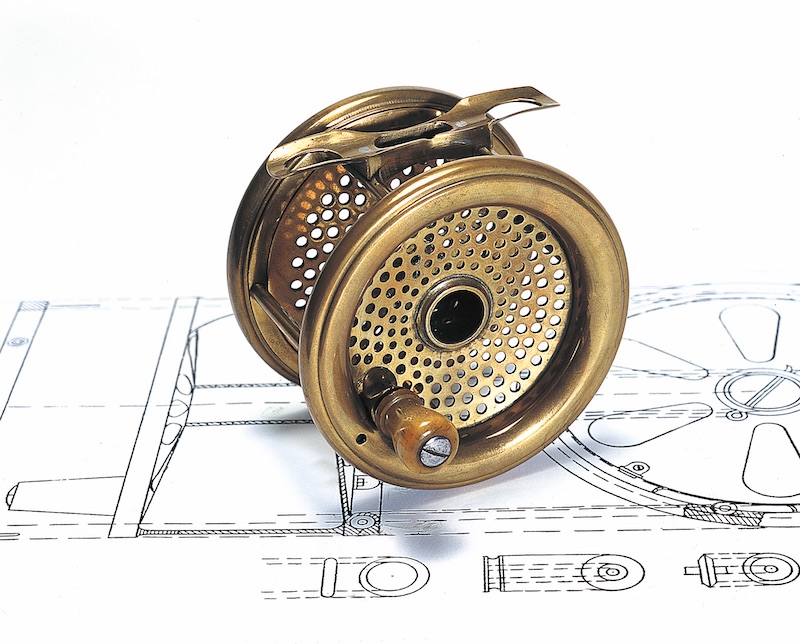
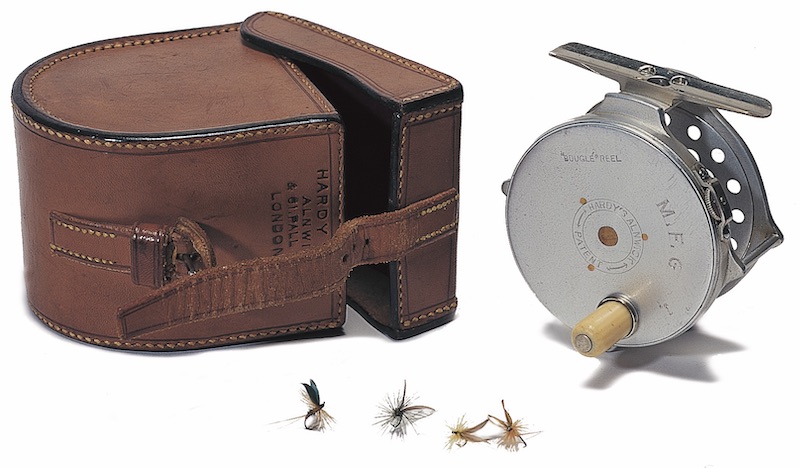
Hardy’s of Alnwick, Northumberland, UK, produced perhaps the world’s most popular trout reels, with the Perfect series. Pictured here is the prototype for the Hardy Perfect, as well as the Hardy Bougle reel and an early Hardy brass-faced Perfect 2.25 inch reel.
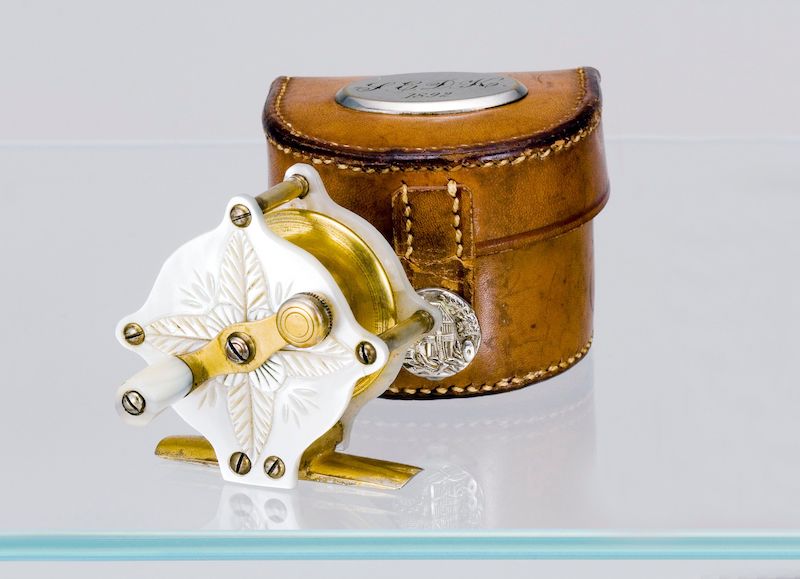
Perhaps one of the most beautiful trout reels was a presentation reel made of gold-plated fittings and mother of pearl side plates with matching leather case, which was sold for $7,280 by Lang’s Auction in 2007.
Steve Woit is the author of “Fly Fishing Treasures: The World of Fly Fishers and Collecting”, a book featuring profiles of 30 experts and collectors and over 800 photographs of rare and collectible fly rods, reels, flies, books, and ephemera.





